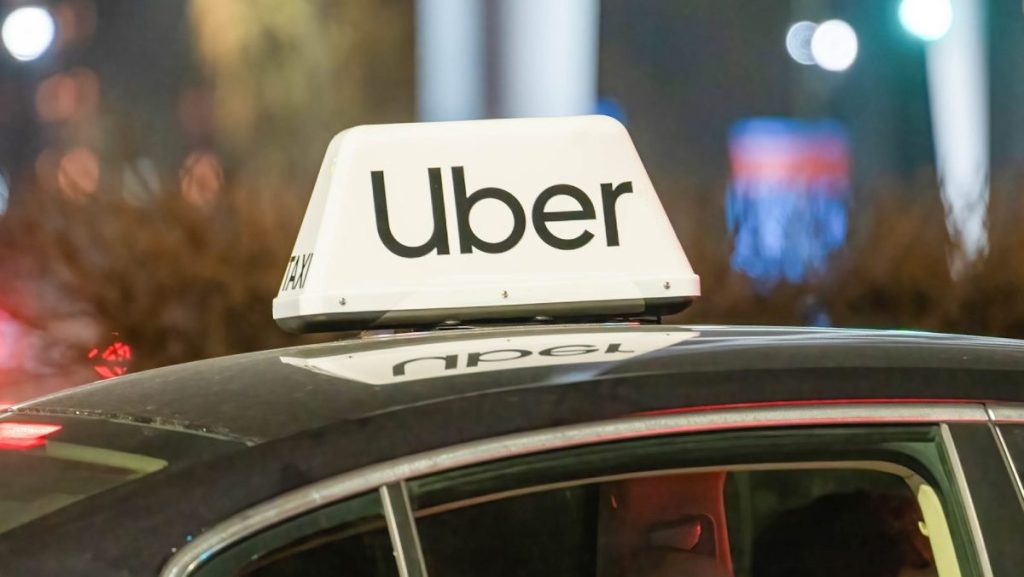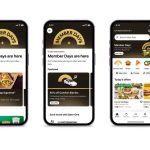The giant of the cat and the Uber delivery is introducing cheap rides along the corridors occupied during travel hours on weekdays in the main cities of the United States-A solution to a world that seems, for most people, more expensive every day.
Starting from Wednesday, the pilots of Baltimore, Boston, Chicago, Dallas, New York City, Philadelphia and San Francisco will be able to save 50% on the price of a Uberx trip by booking with the new function of Uber “Route Share”.
The company has announced the sharing of the route and other new features and discounts designed to help customers save money on races and deliveries in its annual Go-grow event. The goal is to attract and maintain a base of loyal customer that continues to use the Uber app despite the external economic pressures.
The commuting shuttles will guide the pre-set stops every 20 minutes, according to Sachin Kansal, Uber’s Chief Product Officer. He observed that there will be dozens of routes in each launch city – as between Williamsburg and Midtown in New York. The routes, which are selected according to the vast Uber data on popular travel models, could have one or two additional stages to collect other passengers. To start, cyclists will always have to share the path with a maximum of two other co-Cavalieri.
Cyclists can book a place everywhere from seven days to 10 minutes before a scheduled pick-up and the app will provide them with delivery indications to bring them from their home to the corner where they will be collected.
Uber is based on the same technology below it uses for Uber Share, its shared races offer in which cyclists can get 15% to 30% discount on the cost of a Uberx lap by common with others. Kansal told Techcrunch that Uber has complete millions of trips shared every year and has recently seen more traction while cyclists are looking for other ways to save. Therefore, sharing of the route.
“Due to the size of our network, both on the side of the consumer and on the driver’s side, and our coordination and the technology based on the market, allows us to do something like this and put more people in the same car by creating efficiency and predictability for their journey,” Kansal said to Techcrunch.
Uber provides for a future in which the share of the path could qualify for the benefits for gross imposed commuters. However, as a spokesman observed, the company should find a way to combine those travels with Uber XL vehicles. This is because only six -seater vehicles would meet the eligibility requirements.
A potential progression of the share of the path would imply autonomous vehicles, in particular in chaotic cities such as New York City, where no autonomous driving car company has deigned to test.
Uber has partnerships with 18 AV companies and during its delivery of the profits of the first quarter of last week, the company reported that it has grown at an annualized rate of 1.5 million mobility trips and AV delivery on the Uber network.
One of the most recent AV partners in Uber is with Volkswagen. The two plan to work together to add autonomous versions of the VW ID. Buzz ad for Electric Vehicles to the Uber App – in particular for shared runs – starting from Los Angeles in 2026.
“You can see a natural extension of us capable of bringing the sharing of the path to autonomous vehicles,” said Kansal. “(Route Share) has many advantages for the autonomous vehicle. It is a very well -defined path, and therefore the pickups and drop off are predictable.”
Other ways in which Uber frequent users can save
Each of Uber’s Get-go events has a theme. Last year, she focused on how to help people spend more time together. This year, with economic uncertainty that looms due to the rates of President Trump, mass layoffs throughout the technological world and AI who arrives for all our works, Uber is focusing on savings on the costs for cyclists. In the process, Uber hopes to create a predictable cash flow and viscosity that maintains cyclists engaged with Uber.
“Recently, what we have felt very strong and clear is that people feel very uncertain, people feel overwhelmed and people feel prices in many different social classes, and there is this need and the desire to obtain more convenient options,” said Kansal. “So everything we are announcing is exactly focused on how we make life more convenient for them.”
One of the new Uber features is “ride pass” that cyclists can use to “protect their price for a 1 hour window every day on the selected routes”. There are two ways in which it will work. Both cyclists can pay $ 2.99 to block a price on a specific route, or they can pay in advance and buy a prepaid travel package. They can buy five, 10, 15 or 20 runs for an “even deeper discount”.
The price block offer will be available for Chicago, Dallas, Houston, Las Vegas, Miami, Nashville, Orlando, Phoenix, San Francisco and Washington DC cyclists starting Wednesday, with the rest of the United States and Brazil to follow. In autumn, price blocking and prepaid pass for teenage accounts will also be available.
From a Uber Eats point of view, Uber is deepening its partnership with Opentable and launching a function called Dine Out, which allows customers in the United States, Canada, Mexico, the United Kingdom, Ireland and Australia books by OPENTABLE TABLES ON THE UBER APP. When they reserve (on the Uber app or on the Operable App), they will get a discount on a Uber lap at the restaurant. In addition, OPENTable members will soon be able to use their points on Uber and Uber Eats, not unlike Uber partnership with Delta Air Lines.
These types of agreements could offer savings for cyclists, in particular during the top times where the prices of the increases are in force. But they are probably more advantageous for people who often use Uber service. Prepaid packages often seem cheaper due to early discounts, but cyclists could also overestimate how much they will use them.
Uber price strategy is also not transparent and some relationships have suggested that cyclists with prepaid credits or gift cards get higher tariff quotes than those who pay per race. (Anecdotically, every time I pass from my payment method from my personal card to my business card, the price of the race jumps a few dollar.)
A Uber spokesman told Techcrunch that the price blocking function is based on the historical prices of that trip and the prepaid passage protects against price peaks and adds discounts that are also based on historical prices.



